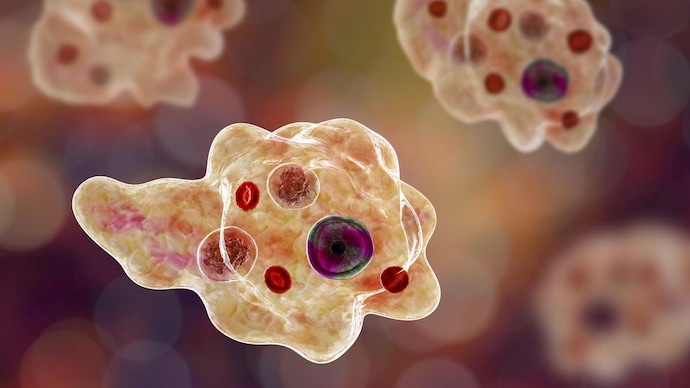Context
-
South Korea recently reported its first case of infection from Naegleria fowleri or “brain-eating amoeba”.
What is Naegleria fowleri?
- Naegleria is an amoeba, a single-celled organism, and only one of its species, called Naegleria fowleri, can infect humans.
- It was first discovered in Australia in 1965 and is commonly found in warm freshwater bodies, such as hot springs, rivers and lakes.
How does it infect humans?
- The amoeba enters the human body through the nose and then travels up to the brain.

Photo Credit: Getty - This can usually happen when someone goes for a swim, or dive or even when they dip their head in a freshwater body.
- In some cases, it was found that people got infected when they cleaned their nostrils with contaminated water.
- Scientists haven’t found any evidence of the spreading of Naegleria fowleri through water vapour or aerosol droplets.
- Once Naegleria fowleri goes to the brain, it destroys brain tissues and causes a dangerous infection known as primary amebic meningoencephalitis (PAM), according to the CDC.
- The Naegleria fowleri infection cannot be spread from one person to another
What are the symptoms of PAM?
- In the initial stages, they might be similar to symptoms of meningitis, which are headache, nausea and fever. In the later stages, one can suffer from a stiff neck, seizures, hallucinations, and even coma.
- The US public health agency also observed that the infection spreads rapidly and on average causes death within about five days.
- The fatality of PAM is as such that only four people have survived out of 154 known infected individuals in the United States from 1962 to 2021, the CDC mentions.
What is the treatment for the infection?
- As the Naegleria fowleri infection is rare and progresses quickly, scientists haven’t been able to identify any effective treatments yet.
- At present, doctors treat it with a combination of drugs, including amphotericin B, azithromycin, fluconazole, rifampin, miltefosine, and dexamethasone.
Can climate change increase the spread of the infection?
- With the rising global temperatures, the chances of getting Naegleria fowleri infection will go up as the amoeba mainly thrives in warm freshwater bodies.
- The organism best grows in high temperatures up to 46°C and sometimes can survive at even higher temperatures.
- So far, Naegleria fowleri has been found in all continents and declared as the cause of PAM in over 16 countries, including India.
Source: IE
Visit Abhiyan PEDIA (One of the Most Followed / Recommended) for UPSC Revisions: Click Here
IAS Abhiyan is now on Telegram: Click on the Below link to Join our Channels to stay Updated
IAS Abhiyan Official: Click Here to Join
For UPSC Mains Value Edition (Facts, Quotes, Best Practices, Case Studies): Click Here to Join
